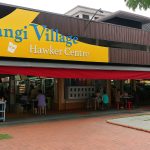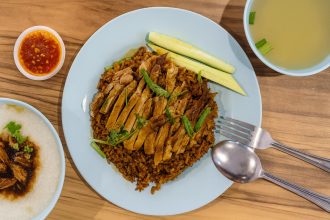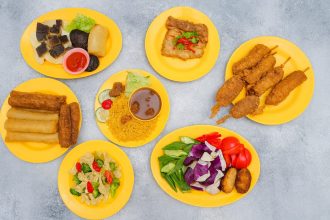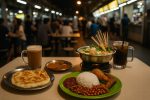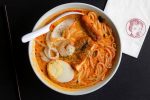Can a single plate of rice, sambal, chicken wing, and otah build a national reputation, win royal admiration, and spark a local food chain? In the case of Selera Rasa Nasi Lemak, the answer is yes—resoundingly so. Tucked inside Singapore’s Adam Road Food Centre, this humble hawker stall has earned accolades, lines that snake around the block, and even the attention of presidents and sultans.
Origins in Kampung Siglap
Before basmati replaced jasmine, before the Sultan of Brunei became a customer, and long before shopping malls hosted branches of CRAVE, Selera Rasa’s foundation was laid by a grandmother in Kampung Siglap. She sold nasi lemak wrapped in banana leaves. Her son, Hassan Abdul Kadir, initially pedaled French loaves on a bicycle through Telok Kurau. Encouraged by his mother, he added her nasi lemak to his inventory.
That simple suggestion steered the family’s future. Hassan’s stint in the Hyatt Hotel laundry room provided a new opportunity. He brought along packets of nasi lemak to share with colleagues. One day, the Sultan of Brunei visited the premises. The Sultan sampled the dish and reportedly advised Hassan to set up a stall. That spark of encouragement led to the birth of Selera Rasa in 1998.
The Sultan’s Endorsement
The Sultan’s fondness for the dish didn’t stop with a single taste. He remains a regular supporter, often requesting Selera Rasa’s nasi lemak for breakfast during visits to Singapore. This unlikely story of laundry-room cuisine gaining royal endorsement underscores how flavor can open doors no marketing campaign ever could.
A Son’s Choice, A Bold Change
Hassan’s son, Abdul Malik Hassan, was on track to become an airline pilot. But his father posed a question that changed everything: “If you go and pilot aeroplanes, who is going to pilot my stall?” Abdul Malik gave up his aviation dream under one condition—he would take full control of the stall’s direction.
His first major decision? Replace jasmine rice with basmati. Not for flair, but for health. His parents had diabetes, and basmati has a lower glycemic index. The challenge? Basmati rice resists coconut milk. It took trial and error to get the balance right. But the outcome was rice that’s light, fragrant, and firm-grained—distinct in every bite.
What Sets Selera Rasa Apart
At the core of its success are four components, each executed with precision:
- Basmati Rice
Steamed with coconut milk, pandan, and lemongrass. The grains don’t stick. They don’t bloat. They hold flavor while maintaining structure. - Sambal Chili
Made with Japanese seafood ingredients—a nod to Abdul Malik’s half-Japanese grandmother. It blends Indian and Japanese chilies. The result: heat with harmony. It accentuates rather than overpowers. - Crispy Chicken Wing
Marinated in turmeric and ginger, fried to crispy gold. The skin crunches, the meat remains juicy. - Otah-Otah
Wrapped in banana leaf, it delivers smoky aroma and smooth texture with every forkful.
Other accompaniments include ikan bilis, peanuts, fried egg, and bergedil. Each item plays its role in the ensemble, but together, they harmonize.
The “Royal Rumble” Set
Among the menu options, one stands out: the “Royal Rumble.” This is not just a name. It’s an edible declaration. The set includes:
- Coconut basmati rice
- Signature sambal
- Fried chicken wing
- Fried fish
- Otah
- Bergedil
- Fried egg
- Ikan bilis
- Peanuts
This isn’t just food—it’s the full narrative of Selera Rasa on one plate.
Recognition and Praise
Selera Rasa’s reputation isn’t just built on food lovers’ anecdotes. It has earned:
- Michelin Bib Gourmand
Proof that fine food doesn’t require fine dining settings. - Straits Times Readers’ Choice Award (2008)
Voted as Singapore’s favorite nasi lemak, a moment that cemented its place in public consciousness. - Presidential Showcase
Prime Minister Lee Hsien Loong served it to Indonesian President Joko Widodo at the Istana. That single act broadcast the stall’s prestige on an international stage.
From Adam Road to CRAVE
With growing popularity came expansion. In 2015, Abdul Malik partnered with Kiosks Collective. The result: CRAVE Nasi Lemak. These outlets offer the original recipe in convenient formats, from malls to food courts. The aim is to maintain flavor integrity while meeting modern convenience.
Despite this growth, the Adam Road stall remains the spiritual home. It’s not a flagship. It’s the origin, where the rice is still aromatic, the sambal still sings, and the queue still forms before sunrise.
Why Selera Rasa Matters
It’s not just about food. It’s about legacy, risk, and commitment. It’s about how a laundry-room lunch grew into a cross-generational story. It’s about how one son gave up wings to ground himself in tradition—and improved it.
Selera Rasa Nasi Lemak didn’t rise through gimmicks or rebranding exercises. It relied on flavor, persistence, and an understanding of what makes a dish resonate. The stall didn’t just serve food. It served continuity. And that’s what people taste in every spoonful.


